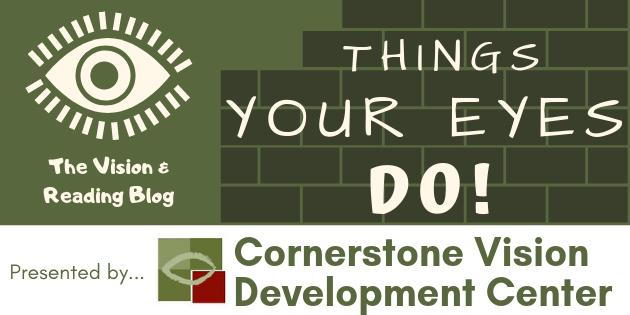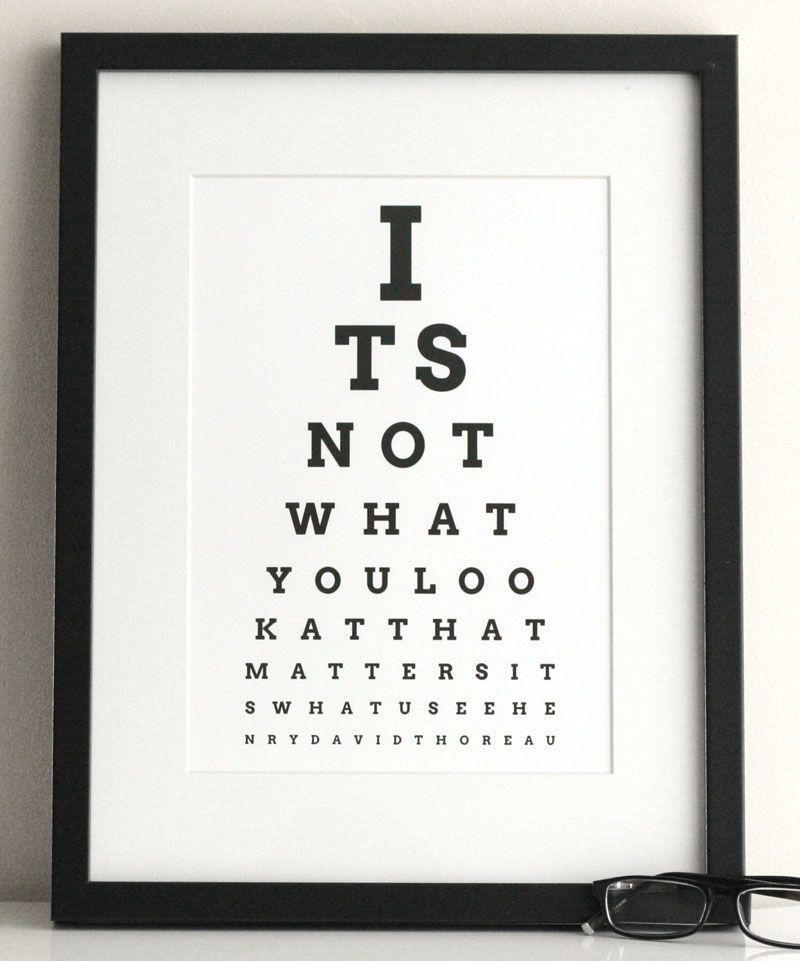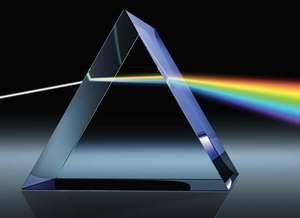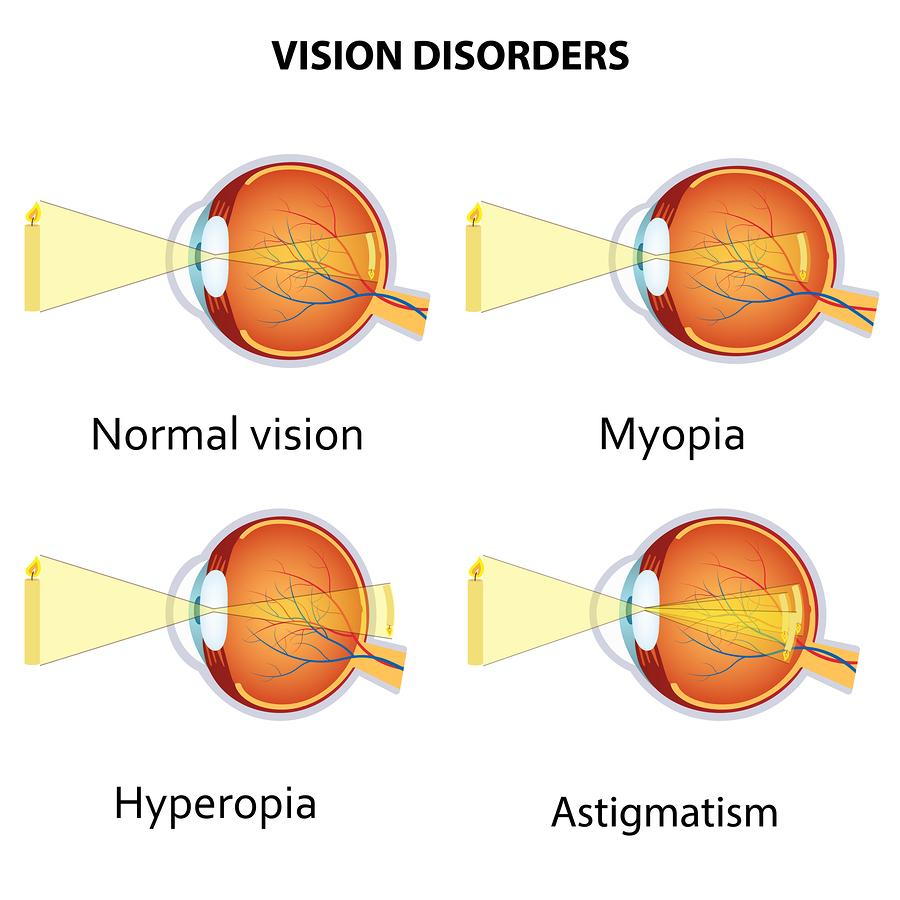
Hey, all! Shannon here again with some more geeky Vision Therapy information to share! In my first post, I talked a bit about our company’s unique background in vision testing. Not only do we test for optimum acuity and eye health, we also pay close attention to how each patient’s visual skills chalk up against documented norms.
Yep: Cornerstone Vision Development Center (CVDC) is our name, and helping people develop visual efficiency is our game. (I probably shouldn’t be allowed to write that cheesy stuff; we’ll call it the coffee effect.)
…
I’m thinking it’s best to start where we’re familiar: 20/20 eyesight. 20/20 is the accepted norm for acuity. It consists of clearly reading a certain size text (an arbitrary “size 20”) at a certain distance (20 feet).

Did you know you could also denote acuity as 10/10? All your eye doctor does here is decrease the size of the text and the distance proportionally: “size 10” at 10 feet. (Fun fact: those who use the metric system say “6/6” acuity since their measurement is in meters instead of feet. Ratios for the win. And the math geeks rejoice!)
Realistically, patients are now measured at 10/10 or similar, but we continue to say “20/20” since it’s familiar… Can you imagine sitting in an exam chair that was actually 20 feet away from the wall with the chart? If only we could afford that much extra space!
…
So why can’t some people make out that little letter at the appropriate distance? Let’s do a little background.
Think about this: sight is dependent upon light. (Maybe that should be obvious, but it’s not always in the forefront of my consciousness... My toes certainly don’t like appreciate times we’ve attempted navigation in pitch-black circumstances. *Ouch!*) Light? Pretty important.
So the eyes, in essence, are an absolutely AWESOME teamed mechanism whose purpose is to control light in a way that your brain can use it. That’s vision: the brain taking information from the eyes and interpreting it to create an accurate perception of the world.
How they control light? Enter our first “Thing Your Eyes DO!”
Your eyes REFRACT;
They bend light.
…
How cool is this? Take me back to science class when we used prisms (little wedges of glass) to bend a light beam: separating the wavelengths of light so the colors of the rainbow would appear. So beautiful!

The eye bends the light from the “big picture” of the world to fit into the tiny viewing space in your eye. The light rays have to turn and meet at a point on the retina-- the surface on the back of your eye with all the “seeing” cells. (We call those two types of cells “rods” and “cones.”)
There are two main tools in your eye responsible for this light-bending/ refracting task: the cornea and the lens.
The cornea is the clear outer surface of your eye, and thus the front-runner for bending light. It’s refractive--bending-- accuracy is dependent on its shape and thickness: a mixture of genetics and environmental habits.
The lens, on the other hand, is further in and surrounded by a tiny diaphragm-like muscle. The ciliary muscle is responsible for changing the shape of the lens to more precisely focus light onto the retina. But, we’ll have to save all that geekiness for another post.
...
Back to 20/20. If your eye accurately bends light-- not too little, not too much--it hits the sweet spot on the back surface of the eye and you can see clearly with minimal effort.
Sometimes, your eye doesn’t bend light enough, and the light rays fall back too far to be brought into focus. Alternatively, they can be bent too much, and the point doesn’t reach to the back of the eye. Sometimes, even, inconsistencies on the surface of the eye make rays fall at a variety of distances.
The result? Blurry and/ or uncomfortable vision due to hyperopia, myopia, and astigmatism.

I know; ending with a terminology list. “How rude!” But these are the lucky fancy-word topics for my next post. I can’t wait. Catch you next time!
~ The VT Geek
Shannon Gerber, Certified Optometric Vision Therapist
